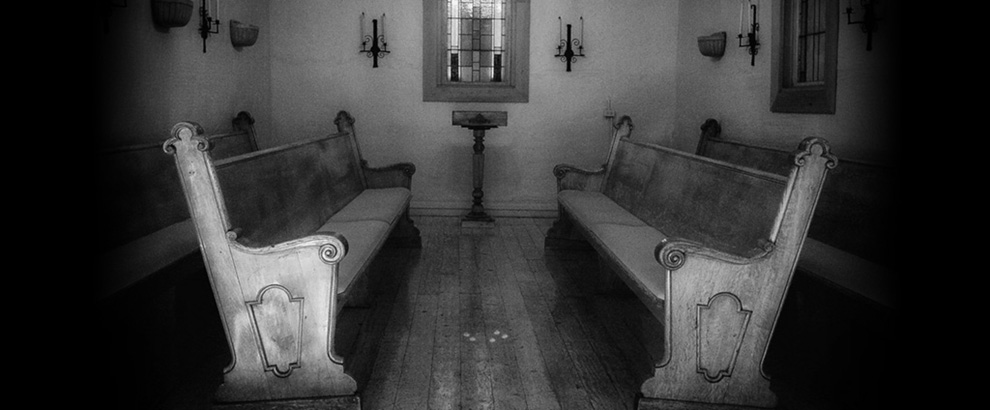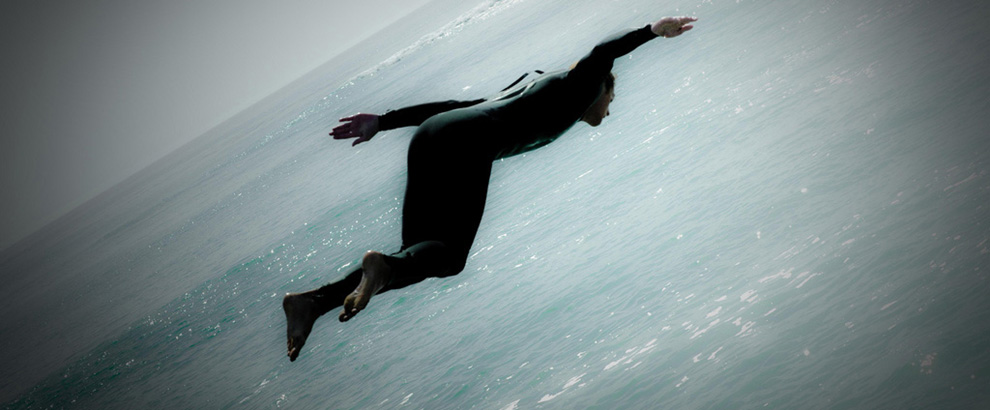
Some music just grabs us as soon as the first sound waves they generate waft through the air on a remarkable (and nearly instantaneous) journey through our ear and nervous system. As those waves turn into electrical impulses that reach our brain, they have been known to cause visceral reactions that often include a primitive language response along the lines of “Mmmhhh” or “OhOhOh…”
The 17th selection in this semi-regular series of “Brilliant Songs” fits into that category like few other musical pieces.
‘Pavane’ continues to thrive as a standard part of the concert repertoire some 133 years after its debut for the most excellent reason that it engages human emotion from first notes to last.
“Pavane, Opus 50,” by French composer Gabriel Fauré (1845-1924), launches from its first violin pluckings (called “pizzicato,” a word I have always loved to say), soon joined by flutes into a dreamy melancholy so lush with pleasing, mood-provoking melody that we are gently coaxed, rather than snapped, to attention, the promise of something beautiful unfolding for our benefit readily apparent from the start.
 The piece runs some six to eight minutes, depending on the pace of the performing orchestra and whether the optional choral section that Fauré added a short time after the original composition for piano is included. (You can give the piece a listen in its various iterations below, including the original piano version played by Fauré himself, which he wrote in 1887.)
The piece runs some six to eight minutes, depending on the pace of the performing orchestra and whether the optional choral section that Fauré added a short time after the original composition for piano is included. (You can give the piece a listen in its various iterations below, including the original piano version played by Fauré himself, which he wrote in 1887.)
A pavane is a slow processional court dance that took hold in Spain in the 16th and 17th centuries, and which the aristocracy used as a showcase for fancy ball gowns and ceremonial feasts. Fauré borrowed the form for his own purposes as he straddled the end of the Romantic Era that spanned most of the 19th century and the Impressionism that followed early into the 20th.
His “Pavane,” however, is notably short of pomp and glitter. If dancers were to embody its essence, we would likely see them with pensive expressions, gliding softly across a sound-absorbing floor, not a heel clatter to be heard.
Let’s give the choral version a listen now, delightfully rendered by a Spanish youth orchestra that just might, as a special Traversing bonus in this post-election holiday season, give a little boost to your hope for the future of humanity.
***
***
For all its haunting musical qualities that percolate directly from orchestra through chorus in a straight line of solemnity and reverence, the lyrics to “Pavane” didn’t much concern Fauré.
Or perhaps he just knew better than to object when a patron of his, Countess Élisabeth Greffulhe, enlisted one of her cousins to provide the lyrical accompaniment. (Words almost every creative professional ever has heard and always dreaded from clients: “I have a niece/cousin/spouse who’s really talented and…”)
Unlike previous songs in this series, I won’t print the lyrics in their entirety, though they can be found here. A sample will likely show you why:
And it is always the same, and will be like this forever!
We love! We hate! We curse their loves!…
And so, farewell and good day to the tyrants of our hearts!
And good day!
Oh, that same ol’ same ol’ loving and hating and cursing—so tiresome!
What would seem to be this severing of lyrics from music might recall, for longtime readers, a two-part series in this space five years ago that addressed more modern works by Bob Dylan and Randy Newman. For them, subsequent musical iterations of their iconic songs “One Too Many Mornings” and “I Think It’s Going to Rain Today” badly missed the mood and intent of the lyrics. (In Dylan’s song, it was his own subsequent iteration that sinned against the original and was redeemed by the late Jerry Jeff Walker.)
In “Pavane’s” case, this observation is reinforced by a conductor and contemporary of Fauré’s at the time, who called the lyrics merely “a piece of light-hearted chaffing between the dancers.” (“Chaff” meaning “to mock, tease or banter in a good-natured way.”)
I don’t know about you, but when I listen to that choir above come in with its sonorous tones at 1:49, pretty much the farthest things from my consciousness are “mocking, teasing or banter.”
***
Be that disconnect as it may, “Pavane” continues to thrive as a standard part of the concert repertoire some 133 years after its debut for the most excellent reason that it engages human emotion from its first notes to last. All of the instrumentation is restrained and free of bombast. This allows the pure elegance and lyricism of the melody line to capture the imagination of listeners and send them along on their internal journeys, wherever they are bound.
As you’ll hear below, courtesy of piano roll technology that was just being developed at the time, Faure’s original piano composition is actually at a faster tempo than the orchestral version noted above. Interesting debates take place all over the Internet today between those who would uphold Faure’s relatively sprightly tempo versus those cottoning to the more mournful, contemplative pace one hears far more often in modern arrangements.
With no choral element and relatively quick pace, this is the rock-bottom original, more dance-based and as close to Fauré as we will ever get. And it’s fun to see the impossibly exotic language of the piano score move along with us—give it a look & listen!
***
***
Finally, we get to the longstanding American musical treasure Bobby McFerrin, whose vocal adventures know virtually no bounds. Perhaps more than any artist alive or dead, McFerrin highlights the human voice as the first intentional musical instrument, from which all the others were inspired. (Although birders may well give me a cogent argument on that score.)
McFerrin takes the place of the entire chorus in this rendition with the St. Paul Chamber Orchestra, which he led in a unique artistic arrangement for five years late in the 1990s, conducting while also exercising his dazzling vocal chops on particular selections.
For me, his treatment shimmers with respect and love, as McFerrin always demonstrates in whatever work he decides to engage. It is hard to imagine Fauré himself not being pleased.
***
***
Check out this blog’s public page on Facebook for 1-minute snippets of wisdom and other musings from the world’s great thinkers and artists, accompanied always by lovely photography.
http://www.facebook.com/TraversingBlog
Deep appreciation to the photographers! Unless otherwise stated, some rights reserved under Creative Commons licensing.
Elizabeth Haslam, whose photos (except for the books) grace the rotating banner at top of page.
https://www.flickr.com/photos/lizhaslam/
Library books photo by Larry Rose, all rights reserved, contact: larry@rosefoto.com
Flower and field by Andrew Kwieton https://unsplash.com/@andrewkwieton















Fauré and Bobby McFerrin joined me for Shavasana this morning. Thank you for sending them my way….
I’m quite certain they are happy to be of service in such a life-affirming exercise, Mary…
Well My Fellow “A”, you surely picked a great one. It was also used as a theme for the World Cup in 1990. Thank you.
Yes, I saw reference to that, Andrea—hadn’t realized Fauré was a soccer fan! :-)
Looks like a very nice album, too—quite the team there with Fauré, Satie, Ravel & Debussy. All-Stars!
https://smile.amazon.com/Pavane-Maurice-Ravel/dp/B000001GWV/ref=sr_1_16?dchild=1&keywords=cd+pavane&qid=1606714000&sr=8-16
Thanks again Drew. Bobby McFerrin’s voice cannot be rivaled. You should tell readers to put on their headphones before listening. I sure wish I had the stereo equipment that I had when I was in my mid twenties. This smart phone digital music is no match for the analog years. Music like this deserves it. Since live music gatherings are so limited these days, and we have more time on our hands, we are listening to more music on YouTube. Which is good. But the closest we can get to the real thing is better. Sitting outside, expecially where I live, is so pure of sound. And the sounds of the birds so crisp, (as your refrenced birders will attest). Very seldom a jet or helicopter, or even a car, bus, or truck is heard. At these times I realize the compressed, filtered, digital sound does not do justice to what musicians create. But even these shortcomings cannot restrict the essence of this music from reaching your soul.
Most interesting & helpful points there, Kirk, thanks so much. One great reason to get out & about in natural (and distant!) settings is the striking, blessed silence one comes upon, almost shocking when one tunes into it and realizes just how noisy the clatter of the everyday city is. (Lawn mowers, leaf-blowers & Harleys, arghhh!) Lucky you, living where you do!
And your comment also makes me long for my longtime, forsaken-when-I-moved subscriber seats at the Santa Rosa Symphony, sitting directly above the orchestra and able to see every bead of sweat on the players’ brows, the wall of sound from the aggregate of each instrument like something alive, full of resonance, texture, and depth. You are quite right there is nothing like it—music is best when you can see, up close, who is making it.
Once more thanks for another brilliant song. I haven’t listened to Gabriel Fauré’s “Pavane, Opus 50” for some time now, even before the 1990 World Cup theme. As you pointed out, the marriage between its lyric and melody isn’t smooth riding. The incongruity between words and notes leads to an “atonal” day in divorce court: depressing lyrics and beautiful melody. Perhaps Fauré should have looked for a Schiller as Beethoven wisely did in his Ninth Symphony’s fourth movement’s chorus “Ode to Joy”. On a whole different note, I feel the orchestral arrangement clearly enhances the melody’s romantic feel over the tinnier sound of the piano solo, despite the fact that the latter was performed first. Nevertheless, it’s a great example of what Romantic Era music is all about. Thanks.
An “atonal day in divorce court”—love it!
Great point about Fauré lacking a Schiller—that’s what you get when you instead say yes to a patron or client and the kin she’s trying to hoist up at the work’s expense! I actually considered taking a crack at writing some more suitable lyrics to the piece just for this post, figuring the bar was quite low enough for me to proceed. But I realized it would take days or weeks if I really wanted to do it justice, and I’ve learned not to put off for too long certain inspirations when they strike, which the Pavane did the other day when it found my earbuds on my morning walk.
Maybe we should make it a project, or start a contest—”Give Fauré and his Pavane the lyrics they deserve!”
Andrew, it is a lovely, haunting piece of music. The Bobby McFerrin/St. Paul Chamber Orchestra rendition is wonderful.
A Canadian songwriter Amy Sky adapted the pavanne, adding a chorus melody and some sappy lyrics for a love song she titled “Whispers of Angels.” It feels a little precious to me but is lovely in its own way. Here’s a link to a version by a group called Amici, the Opera Band. https://www.youtube.com/watch?v=1DSR9c_p8io
Thanks for the background information – smart and interesting as always.
David
This is so interesting, David, thanks. I agree the reworked lyrics are on the sappy side, and I think Sky’s decision to turn it into a love song doesn’t quite work—the “mood of the melody,” as it were, doesn’t suggest romance to me, though for sure, everyone is entitled to their own emotional response to what they’re hearing! All that said, I salute her effort to at least turn it into something deep and meaningful, which the song very much DOES deserve. I’ll take this version any day over the original.
Hadn’t ever heard of Amici Forever before, either, and feel about the same with them as I do the lyrics. Great voices and glad they’re bringing opera (tunes, at least) to the masses, but the instrumentation felt overwrought and noisy, and something about the words “electronic” and “opera” being in the same sentence just jangled my musical nerves here! :-)
And wow—that group had tremendous teeth! I once wrote a post that you may find of interest on the connection between physical beauty and success, inspired by the dazzling good looks of virtually every soloist who ever appeared with the Santa Rosa Symphony in my years of attendance there. http://andrewhidas.com/hey-good-lookin-assessing-the-beauty-factor-in-work-and-life/
Since we’re in the midst of the Yuletide season, I thought this little story about the melding of music and lyric is an interesting one. It revolves around the Christmas classic “Have Yourself a Merry Little Christmas”, specifically written by Hugh Martin and Ralph Blane for Vincente Minnelli’s film “Meet Me in St. Louis”. Judy Garland felt that Martin’s original lyrics were too dark. She loved the song but the words just didn’t fit the Christmas spirit or the gist of the scene (Garland was trying to console her younger sister Margaret O’Brien about an upcoming move from her beloved St. Louis). Though Martin initially resisted, he ultimately relented. He changed “It may be your last / Next year we may all be living in the past” to “Let your heart be light / Next year all our troubles will be out of sight”. In an interview a few years ago with with TCM’s Ben Mankiewicz he praised Garland for her advice and admitted it may never have become a Christmas classic without that modification.
Tasty anecdote, Robert! And I couldn’t agree more that Garland’s intervention resulted in a vast improvement—those particular lines may well be the most memorable in the song, at least for me.
BTW, we have become big fans of Ben Mankiewicz and the whole TCM scene this past year. The movies are most always a hoot, and that commentary of his, with anecdotes galore, delivered in studious fashion with those black-framed glasses adding an additional note of sobriety, are always compelling, a fine listen in their own right, absent any music!
I found it remarkable how each of the three presentations transported me to different places while listening. The original piano score took me to a parlor in Southern France where I once provided lessons in English to an elderly, quite alert and sophisticated French lady. The memory of those days had long disappeared, and returned with remarkable clarity while listening to the piano score. The orchestral and choral presentations sent my mind on an inventory run of various concert and symphony halls attended over the years. McFerrin? Well, he took me to wonder at the wonder of human creativity and beauty. Thank you for this peaceful, thought-and-emotion-provoking post, Drew. Perfect for this snowy and overcast morning in Colorado.
So there you go, Jay. One song, three versions, three listens, three different experiences. You’ve made an exquisite case for the value of foraging around through the vast fields of musical interpretation. And for the enormous emotive power of music.
Yes, thank you. The long-buried memory of time spent in the drawing room in the south of France is priceless.
Does Faure’s original sheet music for piano exist? It seems although the piece was originally written for piano, the only piano editions are transcriptions / arrangements. I’d love to see Faure’s original piano manuscript.
I don’t know, Steven, but I’m asking around! Will let you know if I find out.